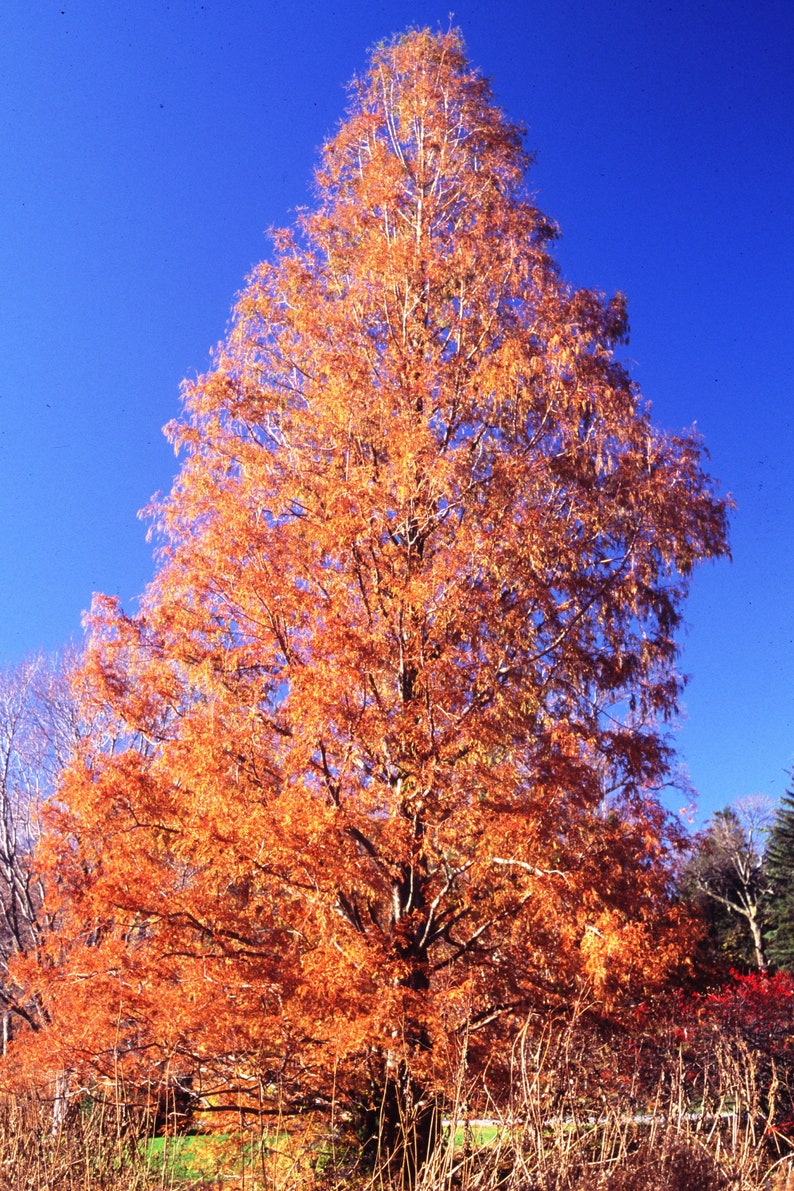

When I observed them under the microscope, I found exciting morphologies similar to the fossils. In order to compare the leaf morphologies of the fossils and living trees, I climbed two Metasequoia trees to the top to collect samples. I was fascinated by the evolution of their leaf morphology and the immense beauty of their micro-morphology. Through these excellently preserved fossils I could travel deep into the ancient ages. They collected many Metasequoia fossils around the world, from the Canadian Arctic to Japan and from the Palaeocene to Pleistocene. She is a Metasequoia specialist and cooperates with Dr. I became a PhD student of Nanjing Institute of Geology and Palaeontology, Chinese Academy of Sciences (CAS) in 2006, and did my Metasequoia research with Professor Qin Leng.

Metasequoia growing near the Hunnewell Building Visitor Center at the Arnold Arboretum. They grow in front of the teaching building, a great example of Chinese traditional architecture, and they create a peaceful environment for study. When I became an undergraduate student at Sichuan University in Chengdu, China in 1999, I first saw real Metasequoia trees. At that time I knew its name was Shui-Shan (水杉, meaning “water fir” in Chinese). It looked so fresh and light, and quickly attracted my attention. The green, feather-like, leafy shoots were displayed against the clear water of a lake. Our first meeting was in a primary school textbook. See our pruning leaflet for more information.Īs with any other tree butt flare (increased caliper at the base of the trunk) can be reduced somewhat by removing the lower branches at an early age.Metasequoia glyptostroboides (dawn redwood) is my favorite plant. These trees require little if any pruning to maintain their pyramidal form other than to remove deadwood and branches that rub against one another but if pruning is required it should be done in winter while the tree is not in growth. Check stakes and ties for chafing and constriction and remove as soon as plants are strong enough to withstand winds without damage.

Pests and diseases can have serious debilitating effects on young plants check regularly. The first summer and autumn after planting is critical for young plants water thoroughly during dry periods. Sprinkle evenly and work into the top 2 to 3cm of the soil taking care not to damage surface roots. They benefit from a dressing (50g/m2) of general purpose fertiliser in early spring as new growth begins this will encourage more vigorous healthy growth. Organic materials such as sawdust and bark contribute to soil structure as they decompose but keep mulching material away from the trunk. Mulching annually helps suppress weeds and conserve moisture. This allows the plant to move a little in the wind encouraging the development of a strong root system without the risk of chafing or root damage Use wide ties that hold securely without chafing tie firmly but allow room for the trunk to increase in girth without constriction. Position the stakes in the hole before planting and place the plant between them. Tall plants and those in windy positions require staking to stabilize the root ball until established. Plant with some general slow release fertiliser and then every spring apply an organic based fertiliser such as blood and bone at a handful per square meter as new growth begins. Make sure plants are watered well until established if planting in a drier period. Dig a hole twice the diameter of the root ball and firm in and water once planted. Trim any broken roots and plant at the same level as in the container. Before planting ensure the root ball is saturated and remove the planter bag or pot with minimal root disturbance. Incorporate coarse sand, bark, compost or other organic material to improve soil structure. Planting success is often improved on clay soils by adding extra topsoil and raising beds. Young plants require thorough watering during dry periods over the first two or three years mulching helps to conserve moisture and suppress weeds. This enables them to withstand dry periods during the following summer. Always choose healthy well grown plants and plant after autumn rains as the soil is moist and warm and allows trees to become established before winter.


 0 kommentar(er)
0 kommentar(er)
